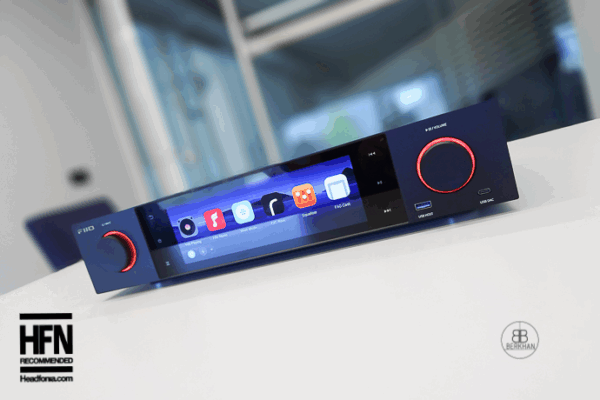In this article, we review the Topping D90 III Discrete Desktop DAC, priced at $999 USD.
Disclaimer: Topping sent us the D90 III Discrete for this review. As always, this article reflects my unbiased experience with the product. We thank the Topping HQ for providing the review unit.
Topping Audio
Topping Electronics & Technology was founded in 2008 in Guangzhou, China. Over the years, the company has built a solid reputation worldwide for designing DACs and amplifiers with excellent value for money. Supported by a dedicated R&D team of experienced engineers and audiophiles, Topping invests heavily in state-of-the-art audio test equipment such as the Audio Precision APx555B, widely regarded as the gold standard in the industry.
My personal experience with Topping dates back to 2013, starting with the TP30 and NX1, both of which made a positive impression on me. Since then, I’ve tested over 30 of their products without any major issues. Building on this track record, Topping has demonstrated a continued drive for innovation and quality as audio technology continues to evolve. While working primarily with AKM and ESS DACs, Topping also develops its own in-house DAC modules.
Today, we will take a look at one of those in-house designs. The D90 III Discrete features Topping’s proprietary fully discrete 1-bit DAC architecture, powered by the PSRM (Phase-Switching Reference Modulator) module, a CPLD jitter reduction algorithm, and a newly designed power supply. This is a significant leap forward for the company, demonstrating its engineering expertise in developing a discrete 1-bit DAC solution.
The D90 III Discrete is available worldwide through various retailers for $999 USD. You can check it out on platforms like HifiGo or Linsoul, although availability can fluctuate during busy sales periods like Black Friday and Christmas. Restocking is usually fast, so patience will pay off if you can’t snag one right away.
Recently, Topping redesigned their website to offer a more polished and user-friendly interface, making it easier to stay up to date on their latest products.
If you’re exploring Topping’s lineup, we’ve also reviewed their D50 III & A50 III combo, a fantastic budget option that offers exceptional value.
Topping D90 III Discrete 1-bit Desktop DAC with PEQ & LDAC
Topping D90 III Discrete is the latest addition to the Topping lineup, and it brings with it several new designs, mostly internally. Topping’s new fully discrete 1-bit DAC architecture utilizing Topping’s proprietary PSRM (Phase-Switching Reference Modulator) resides at D90 III Discrete’s core. This design represents a significant departure from Topping’s traditional multi-bit DACs, which are more prone to quantization errors and distortion. Instead, the D90 III’s 1-bit DAC processes signal with superior accuracy to deliver clean and linear performance.
The PSRM module works in tandem with the newly designed power supply. The D90 III Discrete is absurdly good on paper; with a dynamic range of 130 dB and a signal-to-noise ratio (SNR) of 131 dB, the D90 III Discrete takes technical performance to new heights in its price range. Before deep diving into the sound section, let me give you a spoiler here. It is the BEST DAC I heard under 1k$. Topping has also equipped this DAC with advanced jitter reduction technology, using in-house CPLD algos to achieve jitter levels as low as -157 dB. As I mentioned, absurdly good numbers all around.
In addition to its state-of-the-art DAC design, the D90 III Discrete offers a number of features that make it versatile and future-proof. A ten-band parametric EQ allows users to fine-tune or apply room correction to their equipment with the new Topping Tune app, while the Bluetooth 5.1 chipset offers LDAC (24-96kHz, 990kbps) capability. Let’s dive deeper.
Here are the highlights:
- 16-Phase 1-bit Fully Discrete PSRM DAC Module
- Dual PSRM DAC Modules (Fully Balanced Archt.)
- CPLD Jitter-rejection Algorithm
- New I/V Conversion & New Power Supply Circuitry Design
- System-Wide PEQ (excl. llS)
- Qualcomm QCC5125 Bluetooth 5.1
- LDAC/aptX-Adaptive/aptX/aptX HD/AAC/SBC
- Remote Control Support
- USB / Optical / COAX / AES / XLR / RCA / IIS-LVDS / 12V TRG.
- RCA & XLR with selectable 4V/2V or 5V/2.5V modes
- Preamp & DAC Modes
- Monochrome OLED Display
- XU316 USB Controller 32bit-768kHz PCM & DSD512 Support
- 10-band “Topping Tune” WebApp Parametric EQ (PEQ) Support
- The latest DAC drivers and firmware can be found here.
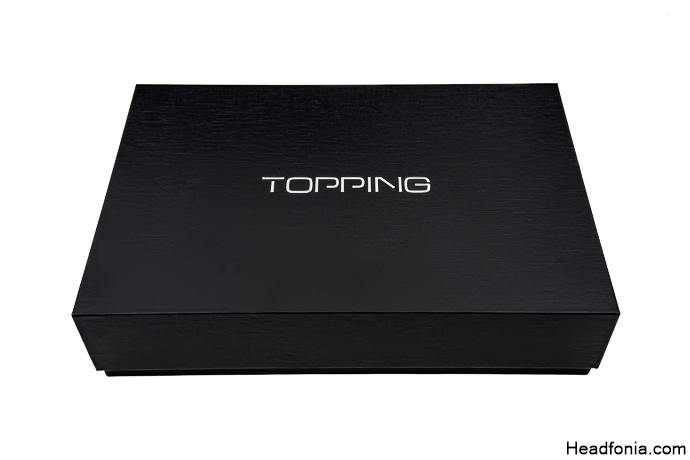
Packaging & Accessories
The Topping D90 III Discrete comes in Topping’s premium outer packaging. The box features a black, grainy wood-textured hard cardboard design with a minimalist aesthetic. There are no flashy product details or technical specifications printed on the outside. Instead, the Topping logo is printed on the front in silver font, giving the packaging a sleek and minimalist appearance.
Opening the box reveals a foam compartment designed to securely hold the DAC and its accessories during transit. A cutout on the right side holds the included accessories: a remote control for convenient operation, a Bluetooth antenna to increase wireless range, a USB-A to USB-B cable, an IEC 13 power cable, and a product information card with a QR code.
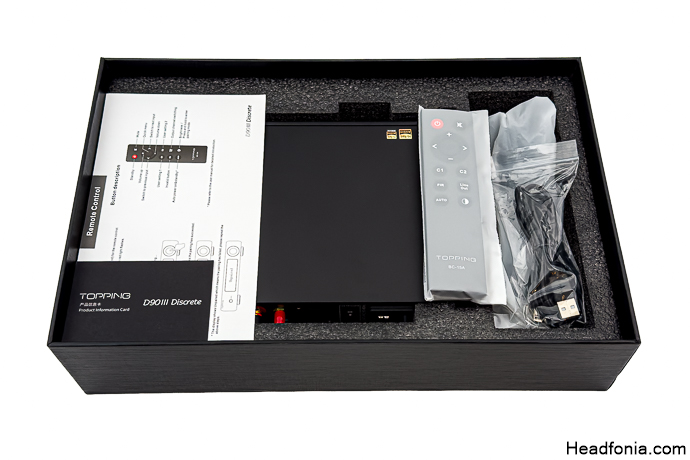
The overall unboxing experience is clean. One aspect that stands out is Topping’s decision to use a USB-B interface for the unit rather than the more modern USB-C. While this choice has no impact on performance, it may feel a bit dated to users who prefer a unified USB-C setup to reduce cable clutter. However, considering that the D90 III Discrete is a desktop unit designed to remain stationary, the practical ramifications are minor, in my opinion. Topping likely chose this interface as a cost-saving measure, which is somewhat understandable given the intended use case.
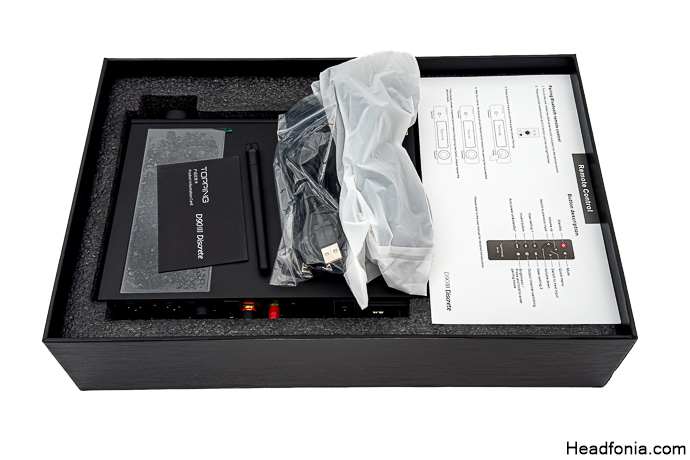
Design & Build Quality
The Topping D90 III Discrete’s chassis is CNC machined from aluminum with a smooth anodized finish that looks good while resisting daily wear and tear. Measuring 220 x 160 x 45mm and weighing over a kilo (1.17kg), it stays firmly in place on your desk, even when connected to heavier cables like my Audioquest Mackenzies. As expected from Topping, the machining is clean and precise, with no visible imperfections. The design sticks to Topping’s older aesthetic, likely as a cost-saving measure given the increased expenses tied to the advanced internal components. Essentially, it resembles the earlier D90 model, but with the right-side volume buttons replaced by a volume pot that doubles as a button. I haven’t had the chance to try the D90 III Sabre, but from what I’ve seen, the III Discrete and III Sabre share much of their design, including the circular raised rubber feet.
The front panel has a straightforward and functional layout. At its center, the monochrome OLED display provides all the essential details at a glance, including active inputs, PCM/DSD mode, active filters, volume levels, and sample rates. To the left of the screen is the Power/SEL button, which doubles as the power switch and input selector. On the right, the push-button volume knob handles navigation and volume adjustments. The knob is well-built with zero wobble, offering excellent tactile feedback. While I found the controls easy, using the remote is undeniably more convenient for daily use.
Turning to the back panel, the D90 III Discrete offers everything you’d expect from a high-end DAC, with connectivity that covers a wide range of setups. All of the unit’s inputs and outputs are located on the rear panel. The D90 III Discrete has unbalanced RCA and balanced XLR outputs. The inputs are USB-B, optical, coaxial, AES, and IIS. The quality of the connectors is great, as you would expect from Topping. The sockets feel rigid and durable without any wobble. For added convenience, you also get 12V trigger I&O.
Overall, the D90 III Discrete feels like a solid and reliable DAC. The sturdy materials, rich I/O options, and user-friendly layout make it a solid option in the market. That said, I can’t help but feel that Topping missed an opportunity to update the design to match their newer, more aggressive monoblock aesthetic. This feels particularly relevant considering their new flagship D900, which uses a similar PSRM module but doubles the 16-phase design to 32-phase for even greater performance and sports a more modern and premium look. While this decision might be a way to differentiate the two products, I would have preferred a sleeker, more contemporary iteration for the D90 III Discrete.
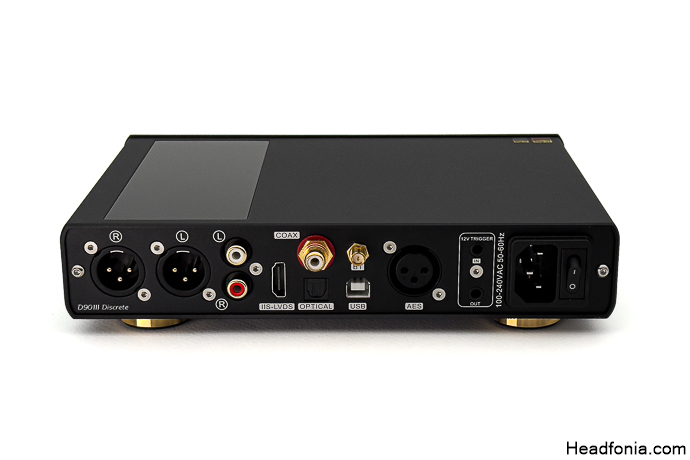
Technology Inside
The Topping D90 III Discrete represents a milestone in the company’s DAC development, joining the flagship D900 as one of the first 1-bit DACs. Both models utilize Topping’s proprietary PSRM (Phase-Switching Reference Modulator) technology, which is central to their unique sound performance. In the D90 III Discrete, Topping uses a 16-phase PSRM module for each channel, while the D900 steps up to 32 phases per channel. While the D90 III Discrete sits at a more accessible price point, it leverages much of the same engineering expertise. Take a look at the PCB here and here.
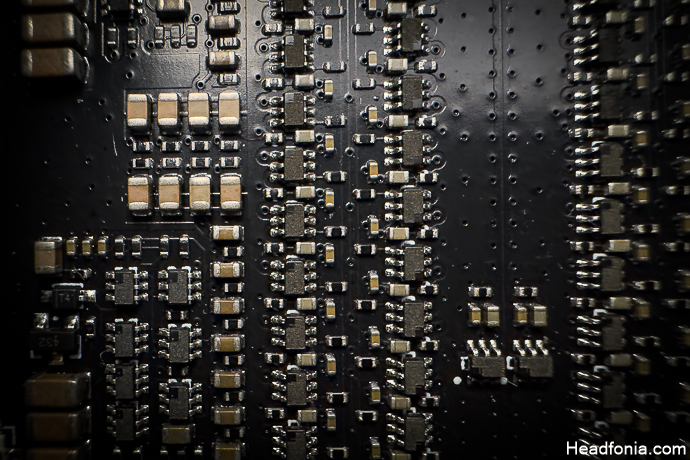
At its core, the PSRM module is a 1-bit discrete DAC designed to perform digital-to-analog conversion with superior precision. Unlike conventional multi-bit DAC designs that process larger chunks of data, the 1-bit architecture focuses on converting signals one bit at a time. While this approach is inherently simpler, it requires meticulous engineering to ensure accurate and transparent audio reproduction. The D90 III Discrete’s PSRM modules accomplish this by employing an ultra-fast switching logic array paired with a precision voltage reference that serves as the backbone of the circuit.
The 16-phase design allows the PSRM modules to process and output signals with high stability, reducing quantization errors and distortion during conversion. However, this precision places high requirements on the power supply. To address this, Topping developed a special noise-free, resistor-based power supply system. This system eliminates electrical noise that could interfere with the voltage reference, allowing the DAC to maintain accuracy and reproduce sound without artifacts.
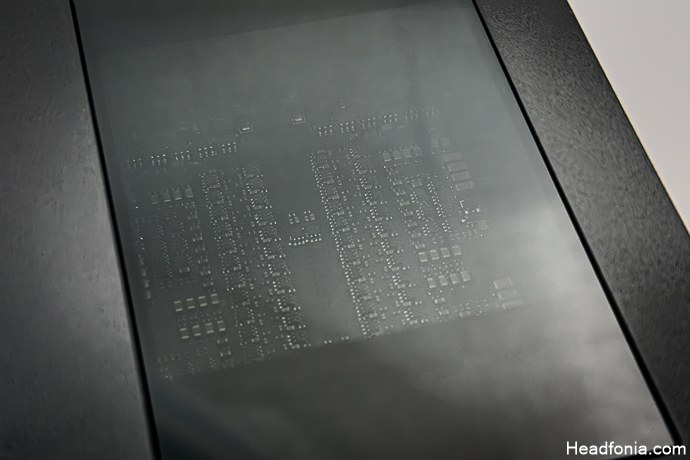
In addition, the D90 III Discrete’s I/V conversion stage (responsible for converting current to voltage) has been completely redesigned to work in tandem with the PSRM module. This proprietary circuit uses carefully selected low-noise operational amplifiers and discrete components to provide a clean voltage.
Timing is another critical factor in achieving optimal performance in a 1-bit DAC, and Topping addressed this with an Altera Max II CPLD. This advanced clock processing chip minimizes jitter, ensuring that digital signals remain stable and accurate throughout the conversion process.
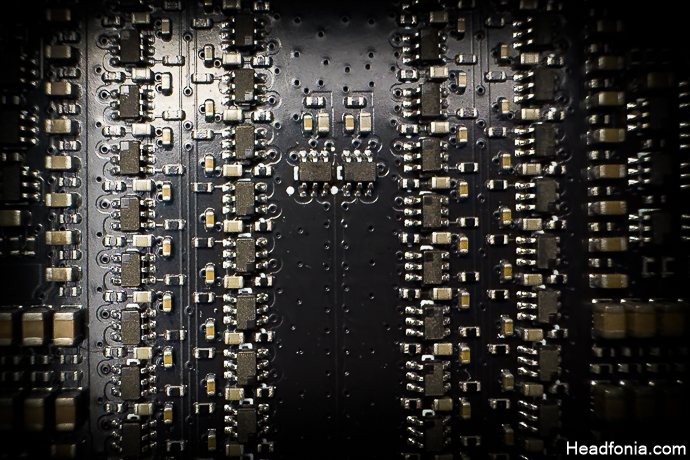
With its sophisticated PSRM module, noise-free power supply, and advanced I/V conversion, the D90 III Discrete delivers a highly refined audio experience. The combination of these technologies helps produce an accurate, transparent sonic signature that preserves the subtle details of a recording.
The review continues on Page Two, after the click HERE or by using the jump below.
Page 1: Topping, D90 III Discrete 1-bit Desktop DAC, Packaging & Accessories, Design & Build Quality, Technology Inside
Page 2: PEQ & Topping Tune Application, Controls, Comparative Sound Quality & Technical Capability, Last Words, Summary









